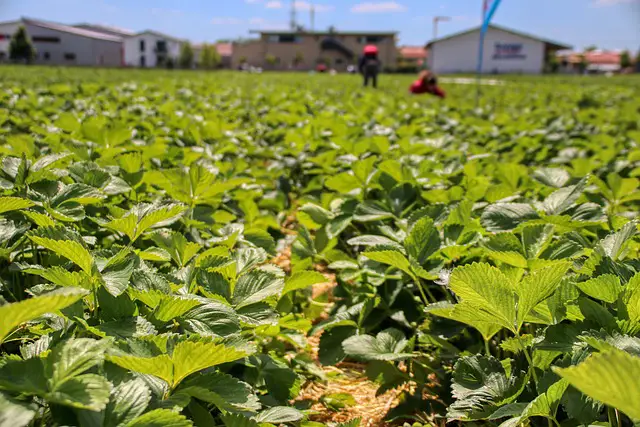Strawberries are a popular fruit in North Carolina, and many people enjoy growing them in their home gardens. However, planting strawberries at the wrong time can result in poor growth and low yields. Therefore, it is important to know the ideal time to plant strawberries in North Carolina.
According to NC State Extension, the best time to plant strawberries in North Carolina is in the early fall, typically from late September to early October.
Planting at this time allows the plants to establish themselves before winter and produce fruit in the following spring. However, the exact planting time may vary depending on the specific location within the state and the weather conditions.
To ensure a successful strawberry harvest, it is essential to choose the right variety, site, and soil, and follow proper planting and care techniques. By understanding the ideal planting time and other important factors, gardeners can enjoy a bountiful harvest of juicy, sweet strawberries.
Key Takeaways
- Plant strawberries in North Carolina in the early fall for best results.
- Proper variety selection, site preparation, and soil and fertilizer management are crucial for a successful harvest.
- Following proper planting and care techniques can help ensure a bountiful supply of sweet, juicy strawberries.
Similar posts:
- When Do You Plant Strawberries in Louisiana?
- When to Plant Grass Seed in Montana?
- When Do You Plant Strawberries in Georgia?
Understanding Strawberry Varieties
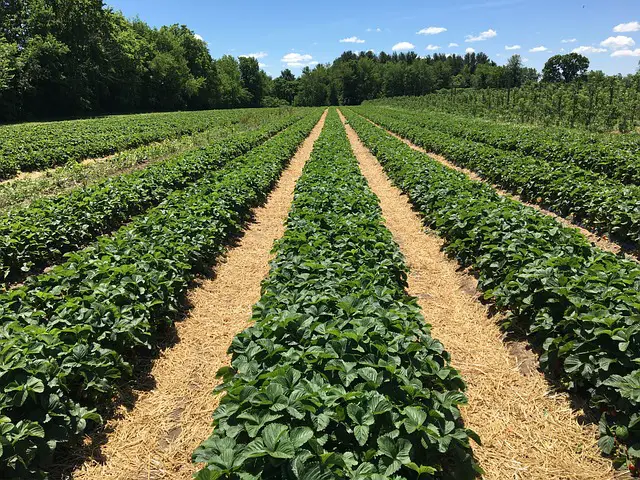
When it comes to planting strawberries in North Carolina, it’s important to understand the different varieties available. There are two main types of strawberries: June-bearing and day-neutral.
June-Bearing Varieties
June-bearing strawberries are the most common type of strawberry and are typically planted in the fall. They produce a large crop of berries in late spring to early summer. June-bearing varieties are categorized into early, mid-season, and late-season cultivars.
Some popular June-bearing varieties include:
- Chandler
- Camarosa
- Sweet Charlie
- Festival
- Seascape
Day-Neutral Varieties
Day-neutral strawberries produce fruit throughout the growing season, regardless of the day length. They are typically planted in the spring and can continue to produce fruit until the first frost. Day-neutral varieties are not categorized into seasons like June-bearing varieties.
Some popular day-neutral varieties include:
- Albion
- Seascape
- Monterey
- San Andreas
- Tribute
When choosing a strawberry variety, it’s important to consider factors such as taste, yield, disease resistance, and climate compatibility. It’s also important to note that different varieties may have different planting and care requirements.
Ideal Planting Time for Strawberries in North Carolina
Strawberries are one of the most popular fruits grown in North Carolina, and for good reason. They’re delicious, nutritious, and easy to grow. But when is the best time to plant strawberries in NC?
The ideal time to plant strawberries in North Carolina is in late winter or early spring, around the last frost date. In the eastern part of NC, this can be as early as mid-March, while in the western part of the state, it’s usually late March or April.
It’s important to note that strawberries are sensitive to frost, so it’s best to avoid planting them too early in the spring. Waiting until after the last frost date ensures that the plants won’t be damaged by cold temperatures.
When it comes to planting strawberries, it’s important to choose a sunny location with well-draining soil. Strawberries require at least 6-8 hours of direct sunlight per day to produce fruit, so be sure to choose a spot that gets plenty of sun.
In addition to choosing the right planting time and location, it’s also important to choose the right variety of strawberries for your area. Some varieties are better suited to the climate and soil conditions in North Carolina than others. For example, the NC State Extension recommends the following varieties for North Carolina:
- Chandler
- Camarosa
- Sweet Charlie
- Festival
By choosing the right variety and planting at the right time, you can ensure a bountiful harvest of delicious strawberries in North Carolina.
Choosing the Right Site
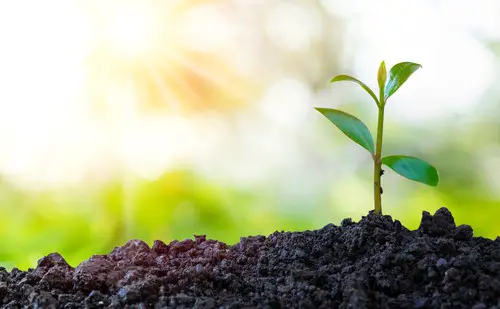
When it comes to growing strawberries in North Carolina, choosing the right site is crucial for success. Here are some important factors to consider:
1. Sunlight
Strawberries require full sun to thrive, which means they need at least six hours of direct sunlight per day. When selecting a site, look for an area that receives plenty of sunlight throughout the day. If you don’t have a spot that gets full sun, you can still grow strawberries, but the yield may be lower.
2. Space
Strawberries need enough space to grow and spread out. They should be planted at least 18 inches apart in rows that are 3 to 4 feet apart. If you’re planting in raised beds, make sure they are at least 6 to 8 inches deep to provide enough growing medium for the plants.
3. Raised Beds
Raised beds can be a great option for growing strawberries in North Carolina. They provide good drainage and allow you to control the soil quality. When building a raised bed, make sure it is at least 6 to 8 inches deep and fill it with a high-quality growing medium that is rich in organic matter.
4. Field
If you’re planting in a field, make sure the soil is well-drained and has been amended with plenty of organic matter. Avoid planting in low-lying areas that are prone to flooding, as strawberries don’t like wet feet.
Soil and Fertilizer Requirements
Strawberries require well-drained soil that has a pH between 5.5 and 6.5. Before planting, it is recommended to test the soil to ensure it has the correct pH level. If the soil is too acidic, it can be amended with lime to raise the pH level. On the other hand, if the soil is too alkaline, it can be amended with sulfur to lower the pH level.
When it comes to fertilizer, strawberries require a balanced fertilizer with a higher potassium content. Nitrogen is also important for plant growth, but too much nitrogen can lead to excessive vegetative growth and reduced fruit production. It is recommended to apply fertilizer before planting and again after the first harvest.
Organic fertilizers like compost, manure, and bone meal can be used to provide nutrients to the soil. These fertilizers not only provide nutrients but also help improve soil structure and water retention.
It is important to follow the recommended application rates for these fertilizers to avoid over-fertilization, which can lead to environmental pollution and plant damage.
In addition to applying fertilizer, it is important to mulch around the plants to help retain moisture and prevent weed growth. Mulching also helps regulate soil temperature, which can be beneficial for plant growth. Straw, pine needles, and leaves can be used as mulch materials.
Planting Process and Techniques

When it comes to planting strawberries in North Carolina, there are a few different techniques that can be used.
One common method is to use plug plants, which are small plants that have been started from seed and then grown in a controlled environment until they are ready to be transplanted. These plants are typically sold in trays of 50 or 100 and can be planted directly into the ground.
Another technique is to use crowns, which are the root systems of mature strawberry plants. These can be purchased from nurseries or other suppliers and then transplanted into the ground. Crowns are generally more expensive than plug plants but can be a good option for those who want to start with more established plants.
Regardless of the planting method, it is important to prepare the soil properly before planting. This can involve tilling the soil, adding compost or other organic matter, and ensuring that the pH level is within the appropriate range for strawberries (between 5.5 and 6.5).
Once the soil is prepared, the planting process can begin. For plug plants, small holes should be dug in the soil and the plants should be placed into the holes, making sure that the roots are covered with soil. For crowns, a small trench should be dug and the crowns should be placed into the trench with the roots spread out.
After planting, it is important to water the plants thoroughly and regularly to ensure that they establish properly. Mulching around the plants can also help to retain moisture and prevent weeds from growing.
Water and Irrigation Considerations
Strawberries require consistent moisture throughout the growing season, especially during fruit development. Adequate irrigation is important to ensure good yields and fruit quality.
Irrigation is critical for successful strawberry production in the Upper Midwest. In North Carolina, strawberries require an average of 1 to 1.5 inches of water per week.
Growers can choose between drip tape and overhead sprinklers, or use a combination of both. Each type of irrigation has its pros and cons. Drip irrigation is more water-efficient, but it requires more labor and maintenance.
Overhead sprinklers are easier to install and require less maintenance, but they can lead to more disease problems due to increased leaf wetness.
To ensure efficient irrigation, growers must install an irrigation system that matches their specific needs. They should work with an experienced irrigation company to install and learn to use their new system.
Proper irrigation scheduling is also important. Growers should avoid overwatering, which can lead to root rot and other diseases. They should also avoid underwatering, which can reduce fruit size and quality.
In addition to irrigation, growers must also pay attention to soil moisture. Strawberries require well-drained soil that retains moisture. If the soil is too dry, the plants will wilt and become stressed.
If the soil is too wet, the plants will develop root rot and other diseases. Growers should monitor soil moisture regularly using a soil moisture meter or by digging a small hole in the soil and feeling the soil with their fingers.
To maintain optimal soil moisture, growers can use mulch to conserve soil moisture and reduce weed growth. A 2- to 3-inch layer of straw or pine needles can help retain soil moisture and reduce weed growth.
Growers should also avoid planting strawberries in low-lying areas or areas that are prone to flooding, as excess water can lead to root rot and other diseases.
Temperature and Weather Conditions

The temperature and weather conditions play a significant role in determining the best time to plant strawberries in North Carolina. Strawberries grow best in temperatures ranging from 70 to 80 degrees Fahrenheit (21 to 27 degrees Celsius) during the day and 60 to 65 degrees Fahrenheit (15.5-18 degrees Celsius) at night.
It is important to avoid planting strawberries during extremely hot weather, as this can cause the plants to wilt and die. Similarly, planting during cool weather can result in slow growth and poor fruit production.
North Carolina’s weather can be unpredictable, and frost can occur as late as April in some areas. It is important to avoid planting strawberries before the last frost date in your area to prevent damage to the plants.
In addition to frost, freezing temperatures can also harm strawberry plants. It is important to cover the plants with a protective layer of mulch or straw during the winter months to prevent damage from freezing temperatures.
Caring for Established Plants
Once your strawberry plants are established, it’s important to continue caring for them to ensure they produce a healthy crop. Here are some tips on how to care for established strawberry plants:
1. Leaves and Foliage
Inspect the leaves and foliage of your strawberry plants regularly. Remove any yellow or diseased leaves to prevent the spread of disease. Prune the runners as well to encourage the plant to focus on producing fruit.
2. Runners
Strawberries produce runners, which are long stems that grow out from the base of the plant. These runners can be used to propagate new plants, but if you want to focus on fruit production, it’s best to remove them. This will allow the plant to put more energy into producing fruit.
3. Growth
Pay attention to the growth of your strawberry plants. If the plant is growing too large, it may be time to divide it. This will help ensure that the plant stays healthy and continues to produce fruit.
4. Light

Strawberry plants need plenty of sunlight to produce fruit. Make sure that your plants are getting at least six to eight hours of direct sunlight each day. If your plants are not getting enough sunlight, consider moving them to a sunnier location.
5. Watering
It’s important to water your strawberry plants regularly, but be careful not to overwater them. Too much water can lead to root rot and other problems. Water your plants deeply once a week, and make sure that the soil is well-drained.
By following these tips, you can help ensure that your established strawberry plants continue to produce healthy, delicious fruit year after year.
Dealing with Potential Issues
While growing strawberries in NC can be a rewarding experience, it is important to be aware of potential issues that may arise. Here are some common problems and how to deal with them:
Summer Heat
Strawberries are cool-weather plants and can struggle during hot summer months. High temperatures can cause the plants to wilt, and fruit may become smaller or misshapen.
To combat this, it is important to keep the plants well-watered and shaded during the hottest parts of the day. Mulching can also help to retain moisture in the soil and keep the roots cool. If you are growing strawberries in containers, consider moving them to a cooler spot or providing shade.
Potential Diseases and Pests
Strawberries are susceptible to a variety of diseases and pests. Here are a few to watch out for:
- Gray Mold: This fungal disease can cause fruit to rot and spread quickly in humid conditions. Remove infected fruit and ensure good air circulation around the plants.
- Spider Mites: These tiny pests can cause leaves to yellow and become speckled. Regularly inspect your plants and use insecticidal soap or neem oil to control infestations.
- Verticillium Wilt: This soil-borne fungus can cause wilting and yellowing of leaves. Unfortunately, there is no cure for this disease, so it is important to choose resistant varieties and rotate your crops.
To prevent the spread of diseases and pests, it is important to practice good garden hygiene. This includes removing dead plant material, sanitizing tools between uses, and avoiding overcrowding of plants.
By being aware of these potential issues and taking steps to prevent or address them, you can enjoy a bountiful strawberry harvest in NC.
Harvesting Strawberries
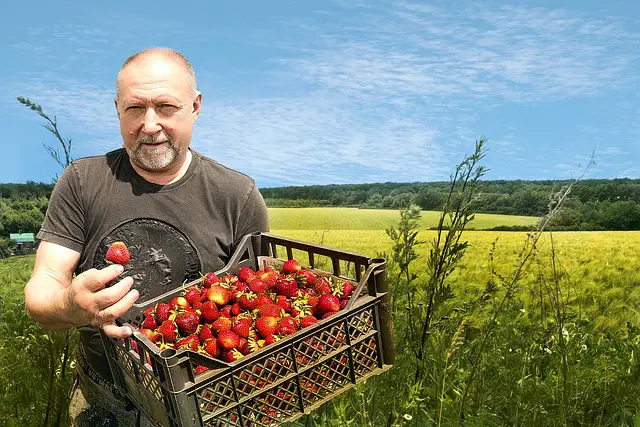
Once the strawberry plants start producing fruit, it is essential to pick them at the right time to get the best flavor and texture. The strawberry season in North Carolina typically starts in late April and lasts until early June.
During this time, the plants produce a bountiful harvest of juicy, sweet berries that are perfect for eating fresh, baking, or preserving.
To ensure that the strawberries are at their peak ripeness, they should be harvested when they are fully red and slightly soft to the touch. The berries should be picked in the morning when they are still cool, and the dew has dried off. It is essential to handle the berries carefully to avoid bruising or damaging them.
After harvesting, the strawberries should be sorted and cleaned to remove any leaves, stems, or debris. The berries can be stored in the refrigerator for a few days or frozen for later use.
To freeze the strawberries, they should be washed, hulled, and placed in a single layer on a baking sheet. Once frozen, they can be transferred to a freezer bag and stored for up to six months.
Post-harvest care is crucial to ensure that the plants continue to produce fruit. After the harvest season is over, the strawberry plants should be pruned to remove any dead or damaged leaves and runners. The plants should also be fertilized with a balanced fertilizer to promote new growth and fruit production.
Specific Strawberry Varieties in North Carolina
North Carolina is a top producer of strawberries, with over 1,200 acres of strawberry farms in the state. Strawberry varieties that grow well in North Carolina include Chandler, Camarosa, and NC State varieties.
Chandler is a popular variety that produces large, firm, and sweet fruit. It is also known for its excellent flavor and aroma. Chandler is a June-bearing variety that is typically planted in the fall and harvested in May and June. This variety is popular among commercial growers and home gardeners alike.
Camarosa is another popular variety in North Carolina. It produces large, bright red fruit that is firm and sweet. Camarosa is a day-neutral variety, meaning it can produce fruit throughout the growing season. This variety is known for its high yield and disease resistance.
NC State has developed several strawberry varieties that are well-suited for North Carolina’s climate and soil. These varieties include Albion, Sweet Charlie, and Radiance.
Albion is a day-neutral variety that produces large, firm, and sweet fruit. Sweet Charlie is a June-bearing variety that produces large, juicy, and sweet fruit. Radiance is a day-neutral variety that produces firm, bright red fruit with a sweet and tangy flavor.
When choosing a strawberry variety to plant in North Carolina, it is important to consider factors such as yield, disease resistance, and flavor. Chandler, Camarosa, and NC State varieties are all excellent choices for strawberry growers in North Carolina.
Growing Strawberries in Different Parts of North Carolina
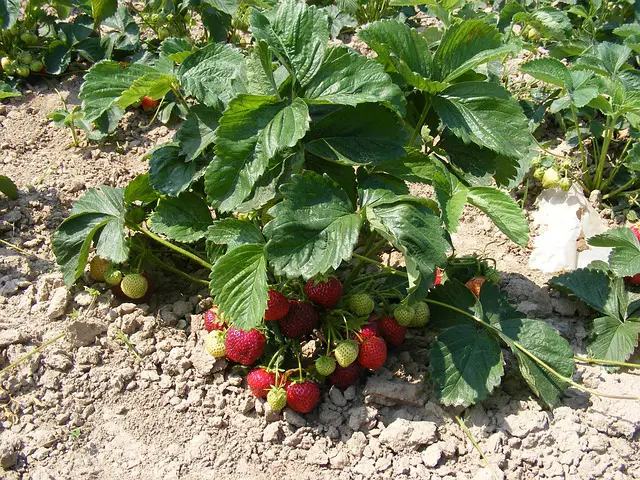
North Carolina has different growing seasons in different parts of the state due to the difference in their climates. The landscape of North Carolina spans six USDA hardiness zones. To grow strawberries, it is important to know the right time to plant them in different parts of the state.
1. Western Part of North Carolina
If you live in the western part of North Carolina, you should plant strawberries in early May. The growing season in this part of the state is shorter than in other parts due to the cooler climate. It is important to choose a location with full sun exposure and well-drained soil.
2. Mountains
In the mountains, the growing season is even shorter than in the western part of the state. Therefore, it is recommended to plant strawberries in late May. The soil in the mountains is typically rocky and acidic, so it is important to amend the soil with organic matter before planting.
3. Coastal Plain
In the Coastal Plain, the growing season is longer than in other parts of the state. Spring-bearing strawberries should be planted in mid-September through early October. It is important to choose a location with full sun exposure and well-drained soil.
4. Piedmont
In the Piedmont, the growing season is similar to that of the Coastal Plain. Spring-bearing strawberries should be planted in mid-September through early October. It is important to choose a location with full sun exposure and well-drained soil.
To get the best yield from your strawberry plants, it is important to provide them with proper care and maintenance. This includes regular watering, fertilization, and pest control. By following these guidelines, you can successfully grow strawberries in different parts of North Carolina.
Frequently Asked Questions
What is the best month to plant strawberries in North Carolina?
The best time to plant strawberries in North Carolina is in the fall. Planting in October or November allows the plants to establish roots before the winter sets in. This will result in healthier plants and a better yield in the spring.
How long does it take for strawberries to grow?
It takes about 4 to 6 weeks for strawberry plants to produce fruit after flowering. The exact timing depends on the variety of strawberry and the weather conditions.
What are some heat tolerant strawberry varieties for North Carolina?
Some heat-tolerant strawberry varieties for North Carolina include Chandler, Sweet Charlie, and Camarosa. These varieties can withstand the heat and humidity of the North Carolina summers and still produce a good yield.
Can you grow strawberries in containers in North Carolina?
Yes, you can grow strawberries in containers in North Carolina. This is a great option for those with limited space or who want to grow strawberries indoors. Make sure to choose a container that is at least 12 inches deep and wide enough to accommodate the plant.
Do strawberry plants come back every year in North Carolina?
Yes, strawberry plants are perennial and will come back every year in North Carolina. However, it is recommended to replace the plants every 3 to 4 years to maintain a healthy and productive crop.
When is the best time to plant blueberries in North Carolina?
The best time to plant blueberries in North Carolina is in the fall or early spring. Planting in the fall allows the plants to establish roots before the winter, while planting in the spring gives the plants a whole growing season to establish themselves before the winter.

Hey, I’m Lisa and I’ve been an avid gardener for over 30 years. I love writing, talking and living in the garden! Feel free to connect with me on my socials below

